The Great 35mm Rangefinder Lens Shootout! UPDATED!
by Brad Husick March 27, 2012
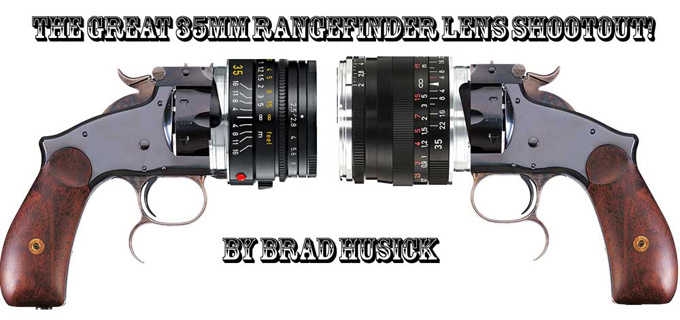
Many of us have GAS (Gear Acquisition Syndrome) and have amassed a generous collection of lenses for our rangefinder cameras. The problem with having a wide selection of lenses to choose from is that when we reach up to grab a lens for our next shoot it’s sometimes hard to decide what to take. At one point my collection was up to 22 lenses and at that point I had become a collector as much as a photographer. Well, over the past few years I have whittled that collection down to the lenses I like most just for their optical qualities. My collecting interest has been refocused on photographs – the ones I take.
Fortunately for this test I still own too many lenses and I have a close friend who owns many more, so I thought I’d begin a series of tests with 35mm rangefinder lenses. These are not laboratory controlled tests of carefully arranged objects but a typical outdoor scene from a local spot here on Lake Washington near Seattle – a subject more people are likely to shoot from day-to-day. The results are my subjective opinion of the optical quality of the photos, and I am including 100% crops for you to make your own conclusions. Here’s the full frame 35mm shot:
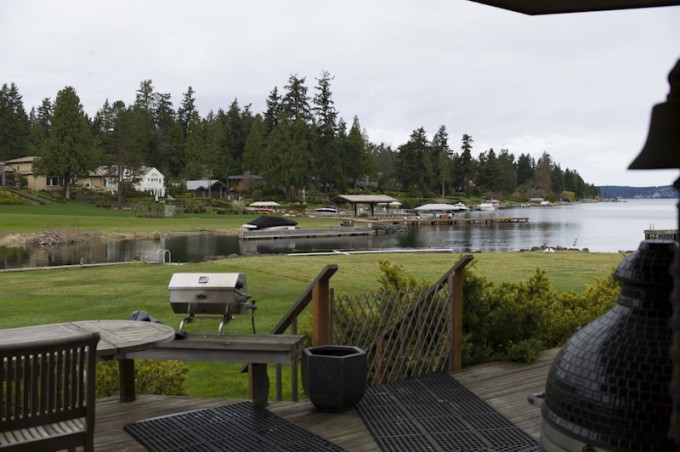
Test Setup:
The test was set up to control and keep constant as many of the variables as possible. Photos were taken on a Leica M9-P mounted on a tripod, set at ISO 160, shutter speed 1/750 sec., aperture f/4, lenses set to their infinity focus point. Not all the lenses had the same maximum aperture and the day was bright enough that trying to shoot wide-open would have required the use of ND filters. I did not want to introduce any glass in front of the lenses for this test. The shutter was tripped using the 2-second self timer to minimize any hand vibrations. RAW files were brought into Adobe Lightroom 4 and exported as JPEG files with no adjustments from default settings.
The weather here in Seattle was in the 50’s with complete overcast and light winds. We get this ideal overcast many days a year – great for photographs, not too great for sun tanning.
The Eight Contestants in the Shootout:
MS Super Triplet Perar f3.5 Mark II (Perar)
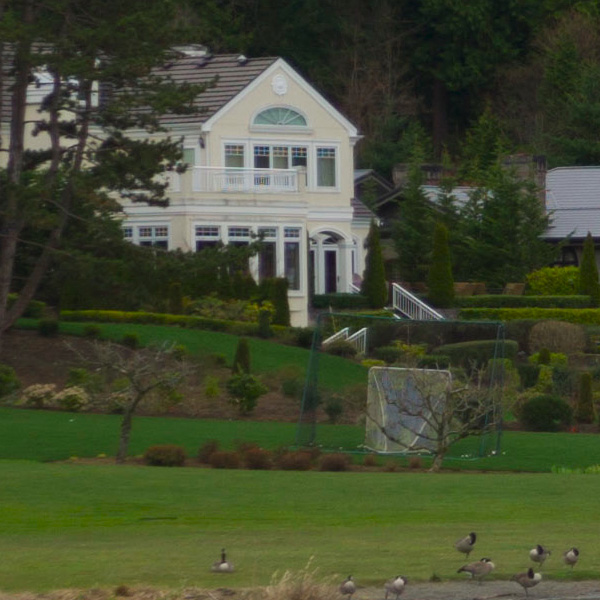
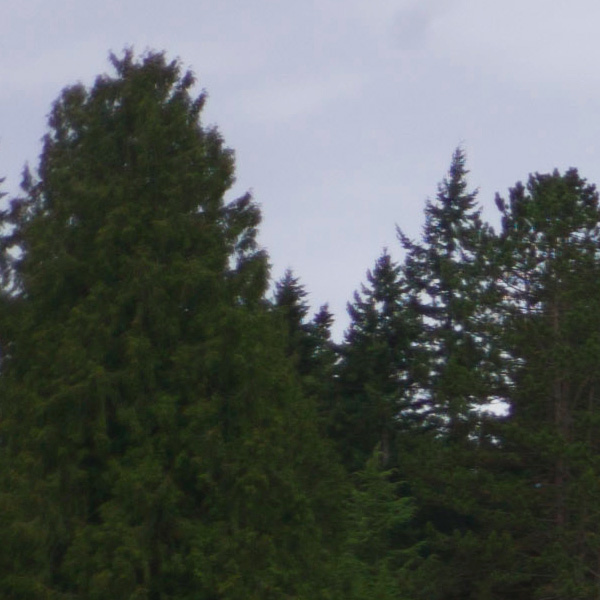
–
Leica Summarit-M f3.5, current version (Summarit)
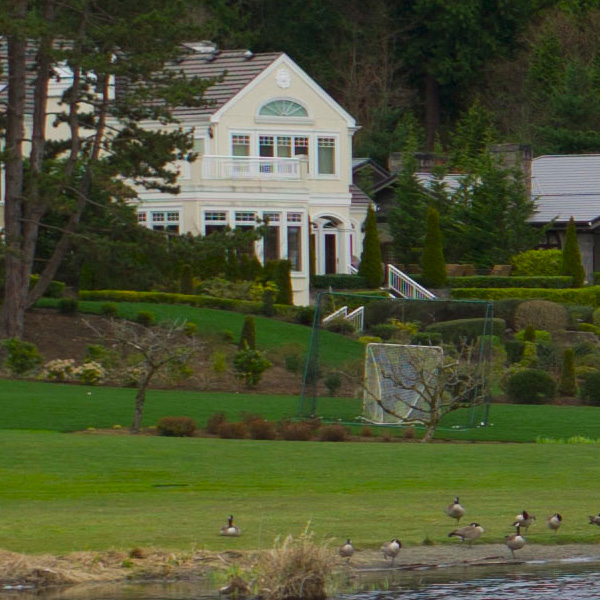
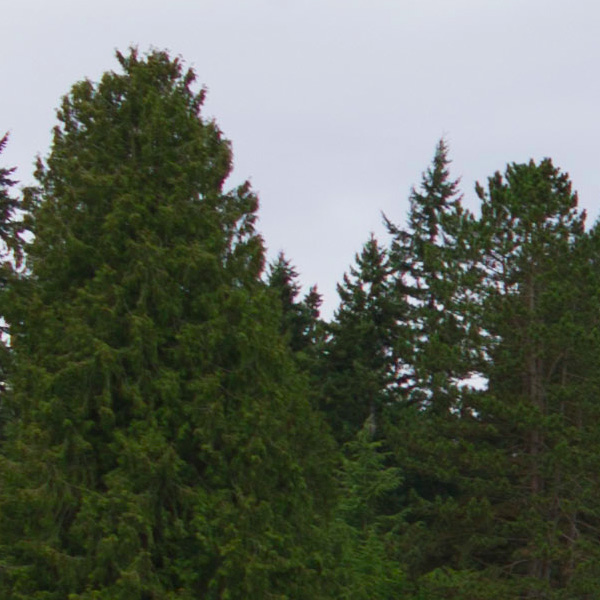
–
Zeiss Biogon f2.0 T* ZM Silver (Zeiss)
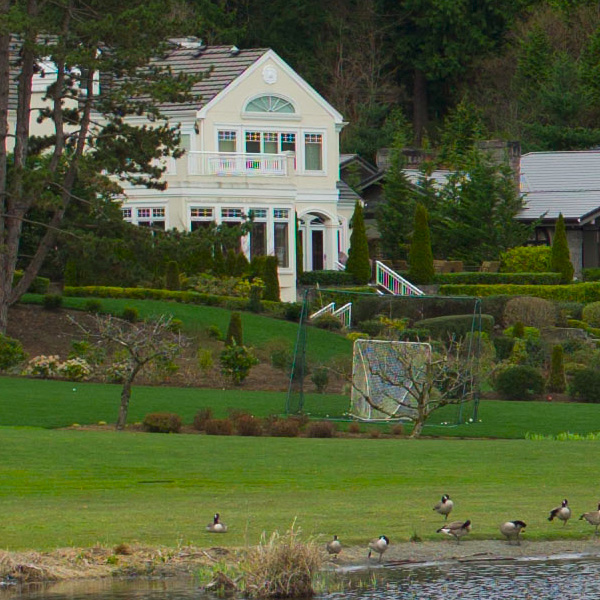
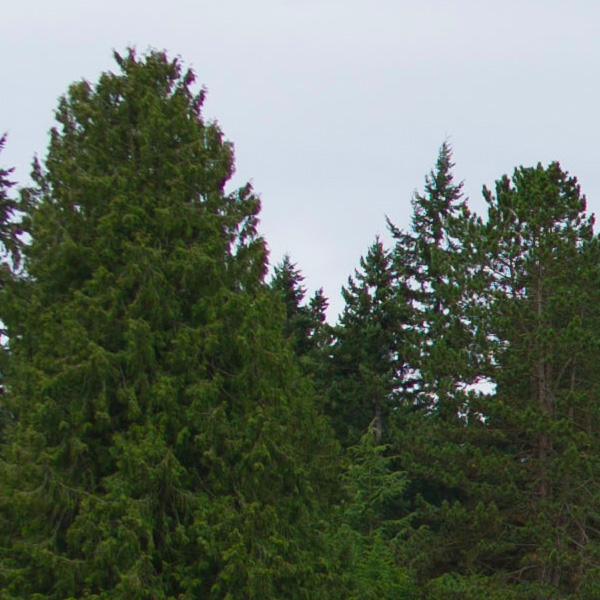
–
Leica Summilux f1.4 ASPH FLE (FLE)
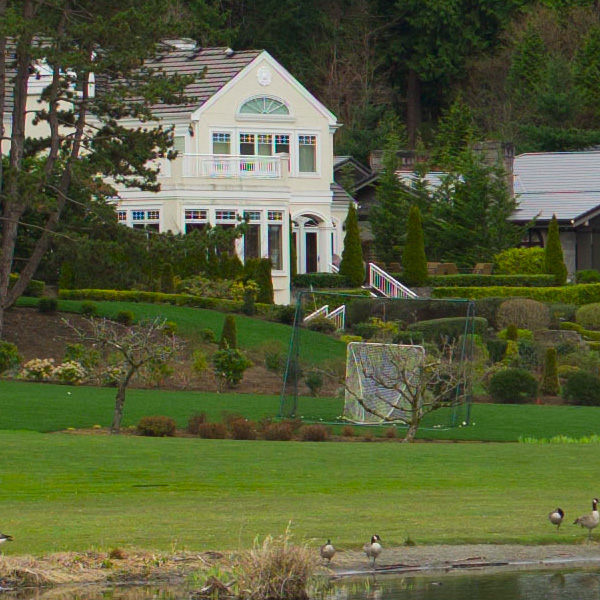
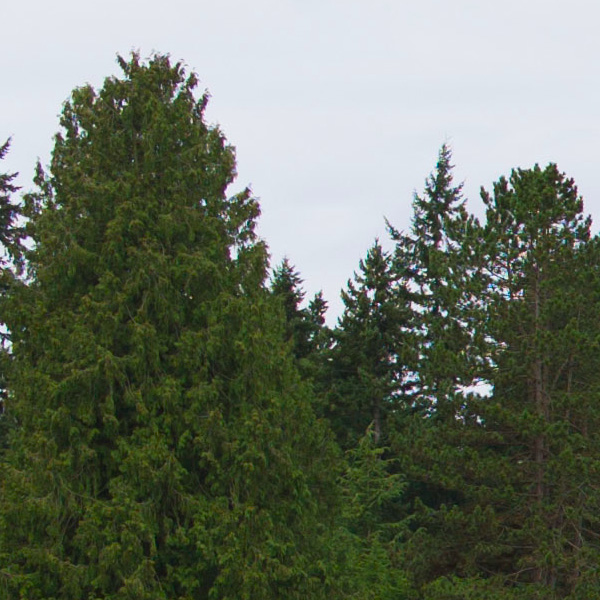
–
Leica Summicron-M f2.0 ASPH Chrome (Chrome ASPH)
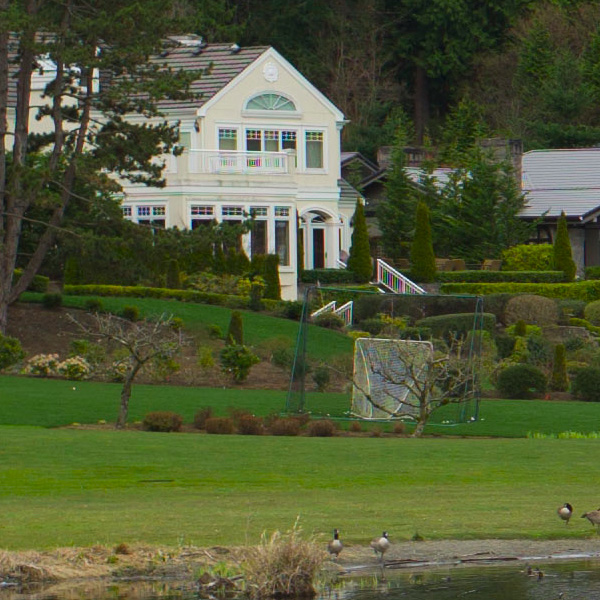
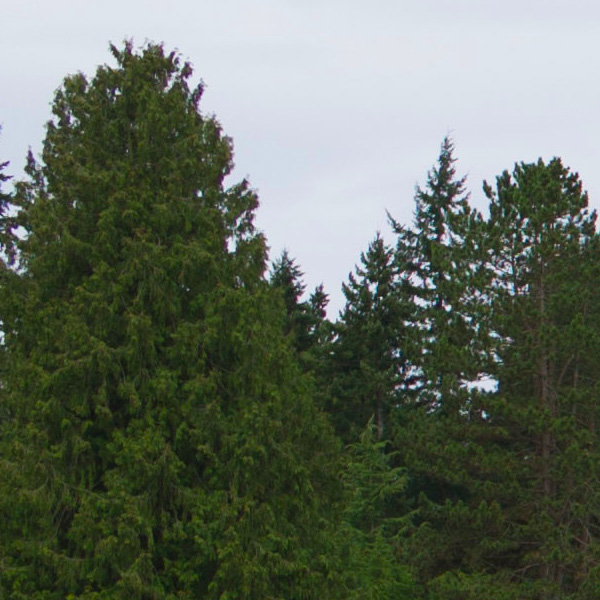
–
Leica Summicron-M f2.0 ASPH Black (Black ASPH)
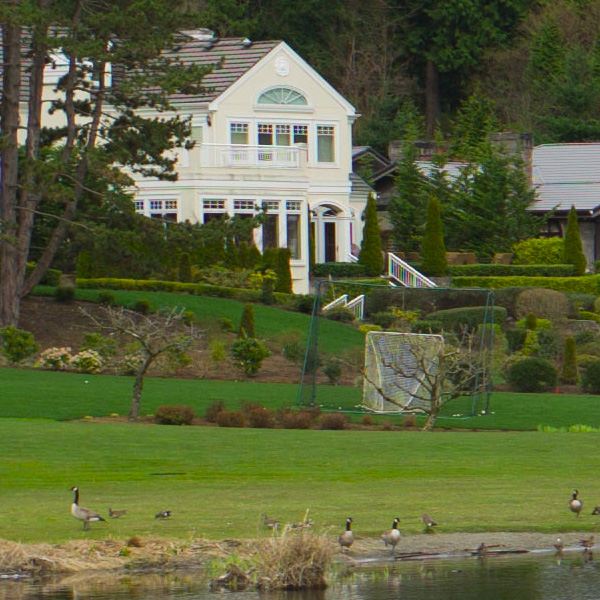
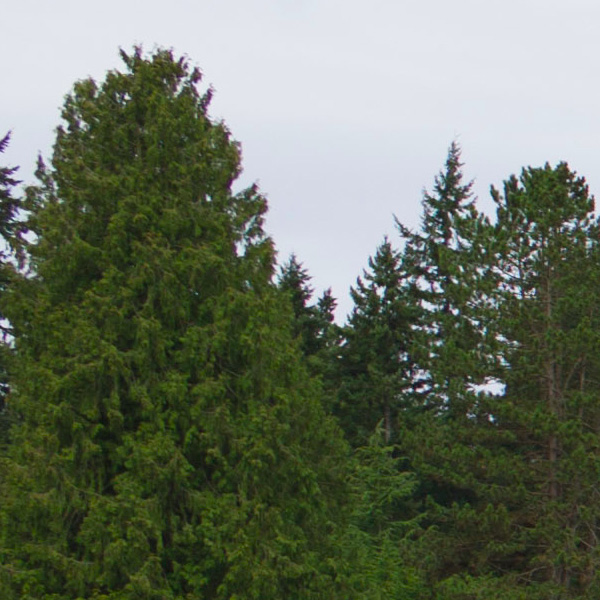
–
Voigtlander C Color Skopar Classic f2.5 (Skopar)
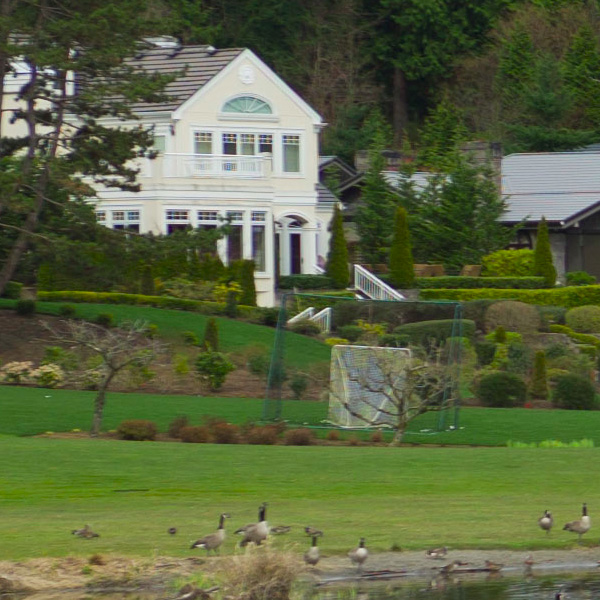
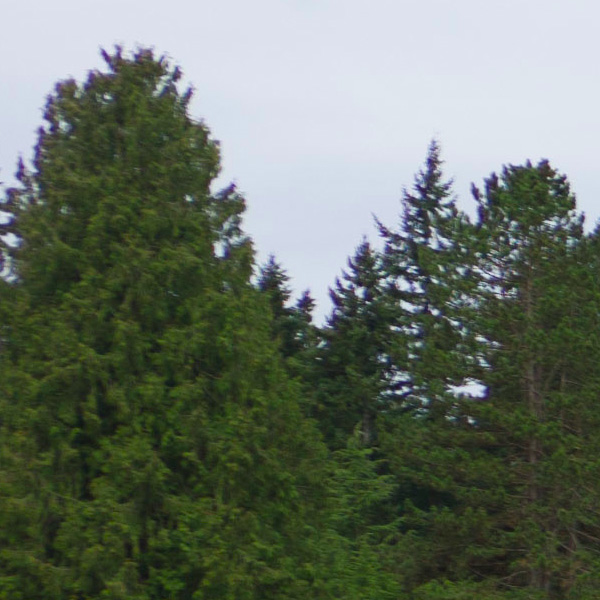
–
Leitz Summaron f2.8 LTM/M circa 1959 (Summaron)
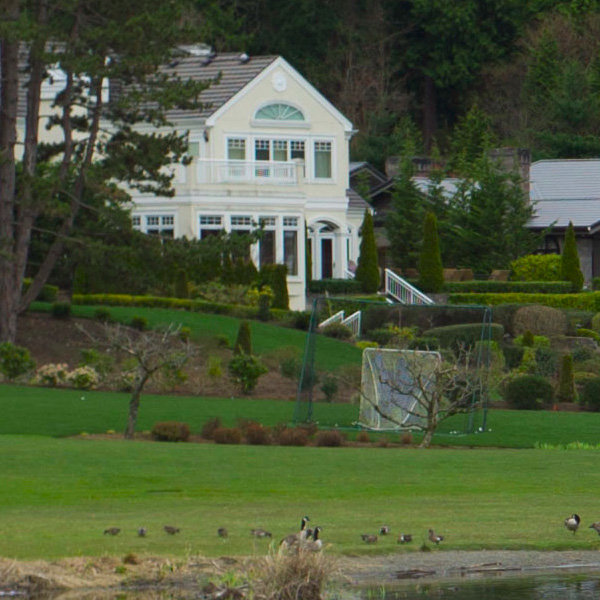
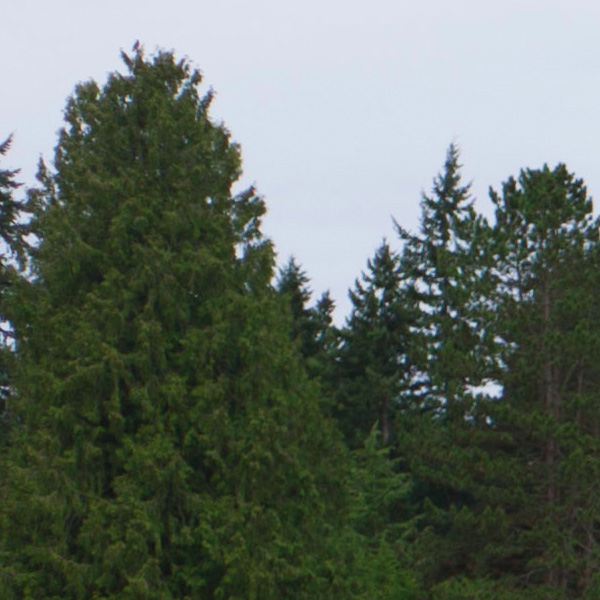
Lens Results:
I examined 100% crops near the center of the frame and at the top left corner. I studied the files looking for overall sharpness and ability to resolve detail, micro-contrast, lack of chromatic aberration (fringing) and distortion.
Not surprisingly, the Leica Summilux ASPH FLE was the top performer at both the center and corner of the frame. Leica took an already excellent lens, the Summilux ASPH, and corrected the focus shift issue by incorporating a new floating element in the FLE. The price of the new lens climbed substantially, with some selling for nearly $8000 a few months after introduction when the initial supply ran dry. Prices have since settled around $6500.
Somewhat surprising is how well the Zeiss Biogon performed, especially at the center, scoring a second place for center performance. Sharpness and detail were excellent. Overall contrast was higher than the FLE perhaps due to different lens coatings. Ergonomics are superb with buttery smooth focus and f-stop. Some may not like the chrome ring around the front of the lens that functions as a bayonet for the optional hood, but I don’t think it detracts from the lens. The Zeiss is the performance-value winner here with new lenses available for around $1000.
I compared two seemingly identical Leica Summicron-ASPH lenses, one black and the other chrome. They were not optically identical. The chrome lens was marginally superior at both the center and corner. This could be due to some slight variation in infinity focus between the two lenses. The pair of Summicron-ASPH lenses scored well, coming in second and third at the corner and third and forth at the center. The Summicron has always been a staple of the Leica shooter and will probably remain there. Used prices range from $2500-$3000.
Leica’s modern Summarit-M is positioned as an entry level lens for the Leica shooter, and is a small and affordable package. Optically however, the Summarit came in fifth in the ranking for overall softness and a lack of micro contrast; a somewhat disappointing result for a modern lens design. The Summarit is list priced at $1895 with clean used lenses selling for $1400.
The Leitz Summaron from 1959 is a beautiful lens with sculpted sloping edges and an unusual focus tab that incorporates an infinity lock. Sharpness of the Summaron was soft, but lacked any chromatic aberration – a surprising result for such an old design and the state of lens coatings from that time period. The softness of the lens was pleasing, giving a somewhat nostalgic look to the photograph. Shooters looking for some of that classic old Leica glow won’t be disappointed with the Summaron. However, compared with modern optics the Summaron just can’t resolve the way the newer glass can perform. Clean used Summarons can be found for around $1000.
Last but not least in the shootout was a personal favorite – the unique MS Super Triplet Perar, often called simply the “Perar”. It’s been a favorite of mine because it is simply tiny. It’s smaller than any Leica collapsible lens in the collapsed state! The aperture is step-free and the focus is smooth with a focus “pin” to assist. Traveling with this lens is a joy since it barely sticks out from the front of the camera and it’s always in a ready-to- shoot position, unlike collapsible lenses. As good as the physical design and ergonomics are, the optical performance of the lens is not up to the standards set by the more complicated and expensive lenses in this test. Perar images are good at center but sharpness falls off at the edges. Perar lenses can be found on ebay and at the maker’s website www.japanexposures.com.
Vignetting is not a problem for any of these lenses and chromatic aberration is well handled by the entire group.
Here are my subjective rankings of the lenses:
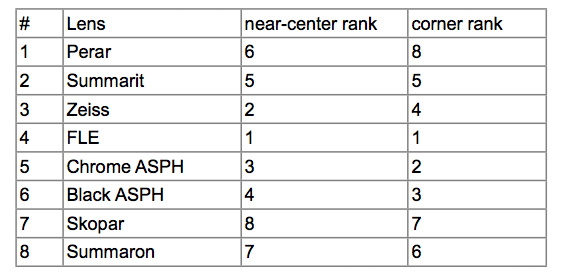
Note: I’d like to thank my dear friend Ed (goes by the handle “fishandfowl” on many boards) for making available five of the lenses in this test. Ed introduced me to rangefinder photography and thus improved my life greatly.
Brad
UPDATE!!
Here are the new Skopar crops:
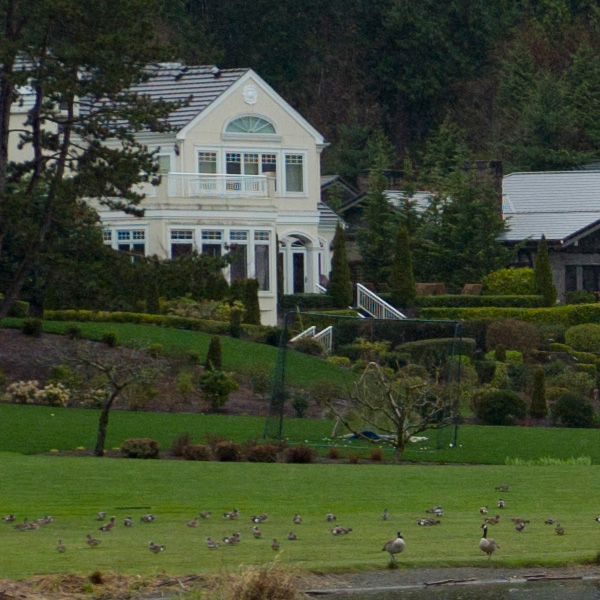
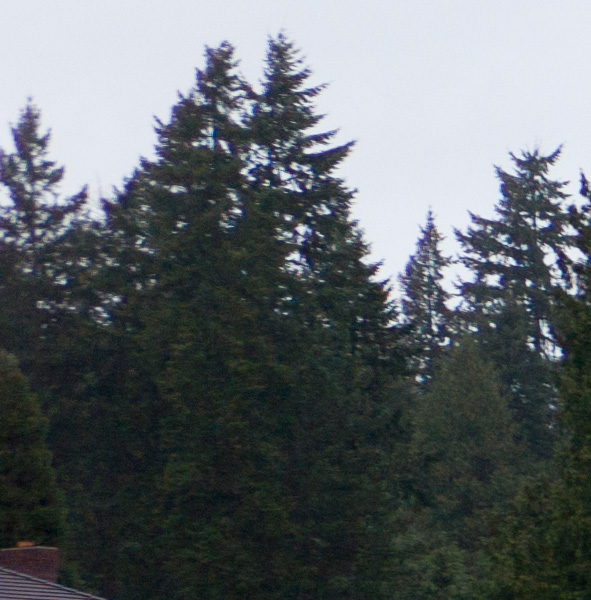
Based on these new results I have revised my rankings:
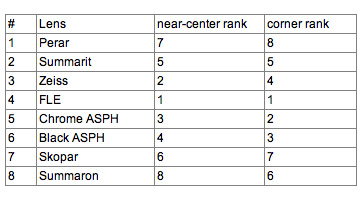
Some visitors posted comments about the overall quality of the images in comparison to other camera systems. To assist in evaluating these images, I have included two more cameras – the Leica D-Lux 5, a highly respected small-imager camera set to 35mm zoom, f/4 and base ISO, and the Apple iPhone 4S, an 8 megapixel imager with an approximate angle of view of 30mm. I think most readers will agree that neither measures up to the images produced with the Leica M9-P. The iPhone was surprisingly good for a phone and has the unique quality of always being at hand when a photo is required.
iPhone 4s
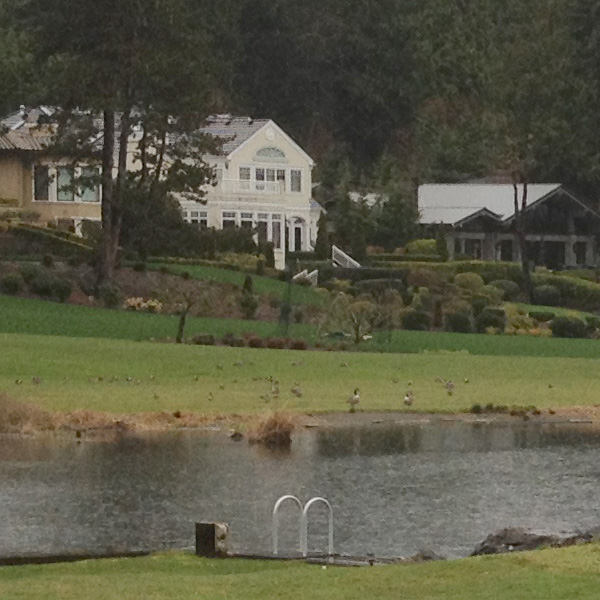
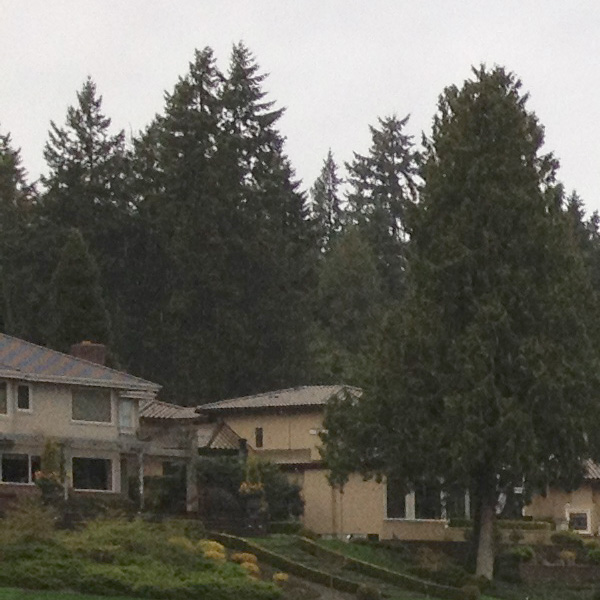
–
D-Lux 5
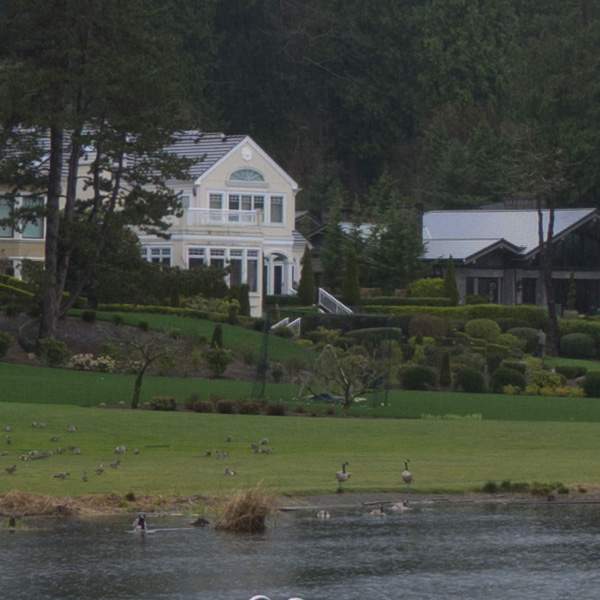
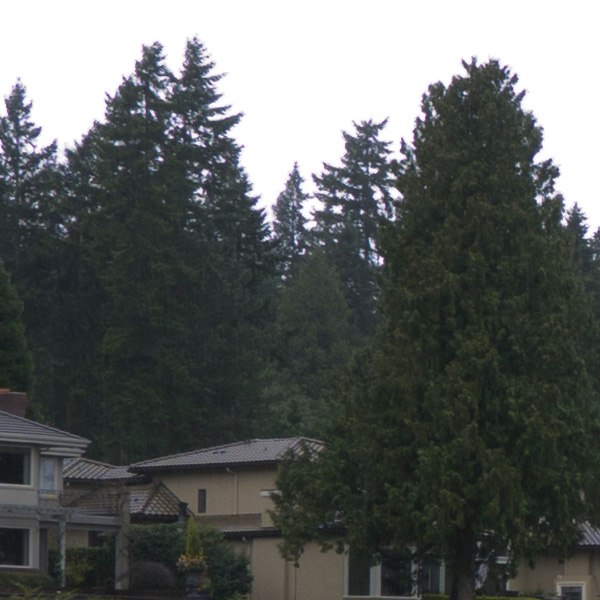


this comparison shows only difference in resolutions.
no distortion, contrast, flare, coma, astigmatism.
i wonder how this lens works in night.
Thanks for this, Brad. I am trialling a number of 35s on the NEX 7 (Sigma 30/2.8, CV 35/1.7, CV 35/2.5, and the Perar 35/3.5 Mk II), so I found your shootout very helpful.
Now, it could be my copy, or a combination of the NEX’s exemplary focussing aids, but the Perar is razor sharp on the NEX. One aspect of the Leicas (M8, M9) that I personally find problematic is that you really do not know with accuracy when you are in focus. Now, and as an ex-pro shooter of earlier Ms in the film days, I acknowledge that you definitely do get better with practise, but I can’t help wondering if the Perar might not have been perfectly focussed?
Since Leica X1 and Fujifilm X100 have 35mm equivalent lenses, it would be very interesting to see their performance as well.
There have been a few comparisons like this on this site over the past year between these two cameras.
Thanks for arranging the test Brad. In addition to the Skopar, I think in general you should turn the focus tab for the other lenses back off a little from inifity for best results – I found on my GXR body that the summarit displays best resolution at a bit before infinity because for most daily subjects we shoot with the 35mm, they are mostly not at “infinity”.
Brad,
Something I was meaning to ask you. Moire shows up as false colours. I understand the “science” behind this, but if you de-saturate to b/w, would this mean the image would look normal, or would some image artefacts remain? In other words, if one restricts one’s photography to b/w would moire never be an issue?
Terry,
The color moire most probably mostly will drop out with desaturation but not completely due to the relative color brightness. Luckily there’s only color moire here that i see and not noticeable pattern moire which isn’t so friendly.
Sometimes having less resolution in your glass can be your friend, although I’ll take the sharpness and live with the occasional fix. 🙂
Thanks, Graham.
It would have been interesting to have the Nokton 35mm/1.4 included in the test
Excuse me. The new 35 ‘Lux is now 6500 dollars? Good lord I’ll never sell another Leica lens again.
Hmm… looks like “someone” is selling his Perar!
I’m keeping mine though. I own the Perar and the Summarit in 35mm and will continue to own them based on their size/value. They take very nice images. Perhaps a comparison shot wide open and at a shorter distance is in order. As that’s where all of these lenses really shine. Or another comparison with them shot at infinity and f/8.
Kevin – great ideas. I am planning a “part-2” of the shootout 1) at closer range and 2) wide open. I won’t be including all 8 lenses, but a representative subset.
Hi, Brad, an interest prospect in store.
I do wonder, though, if you will be letting yourself in for a disappointment as any lens that doesn’t couple with the rangefinder will have to be set by reference to the focusing scale and shooting wide open will reduce DoF significantly at the shorter distance you elect. Can one assume that any lens that was “out” at infinity focus can’t be relied upon at any point along its scale?
Looking forward to the new test! the 35mm focal length is one of my favorite. WOrks well for street, landscape and though not ideal, it can take a nice portrait.
Excellent comparison photos. I wonder if the the results would have been the same with closer focus instead of infinity focus. I’ve got an old Sears 50mm 1.7 that I use on my Pentax that is quite sharp wide open and very sharp from f2.8 when shooting closer subjects. It seems that at infinity distances I have to stop down more to get it really sharp.
The 35mm Biogon that I owned for a week was lousy soft…. but 2 of the 50mm planars that i had were sharper then summicron.. as sharp 🙂 the 21mm zeiss that i tried seemed to soft too…
So really? Can the 35mm Zeiss be as sharp as Summicron? Will it depend on the copy? Cause presumably all of their M mount 50mm Planars are very sharp…
Bad case of moire!!! Yes, the FLE is beautifully sharp, with great micro-contrast. But the railings on the two stairs in the yard show a lot of moire, as does the railing along the 2nd floor balcony. Not the fault of the lense, of course.
Nice test, by the way.
Folks, many here have commented on the softness of the Skopar photo. It may be due to a misaligned infinity focus setting on the lens, I am not sure. As I said, I did not try to achieve optimum focus, rather I set each lens to its infinity setting. Glad to see so many Skopar fans out there. It’s a good value lens, compact and smooth to operate. We’re all happy to have a variety of choices for our rangefinders.
Thanks for updating the results, Brad!
Thanks for the interesting test with the good selection of lenses that you had available, but I agree that it would have been nice to test a CV Nokton 1.2 Asph ll along side these lenses.
Interesting report, thanks for posting it.
If I did more shooting near infinity focus, it would be more applicable to my photography. I’m not a landscape photographer, however, so the distant rendering of trees isn’t quite as significant to me. I’d say 90% or more of my typical subject matter is in the range from 4 to 25 feet… 🙂
Nice test, but the CV Skopar you used is a lemon. My copy (M-mount) is waaaaaaay better than that, I would say it performs as well as the Summarit, maybe even better.
The test would have been perfect with a CV Nokton 1.2, which is an amazing lens and you should give it a go… Thanks and keep it up! E.
The Summicron and Summaron are two of my favourite lenses. And judging by your photos, they are the best value for ducks…
All jokes apart, thank you for putting that test together and sharing with us!
The Zeiss ranking is no surprise to me. I’ve loved Zeiss for 50 years – today more than ever. When we take the price in account (for how many of you is the price of no importance at all?), they are the grand winner.
Thanks for the article, Brad. Great job!
is it not better to collect photographs than lens one does not now which to choose from..?
thank’s for the review anyway ! as usual the winners are the most expensive leica and thankfully zeiss !!
is it not better to collect photographs than lens one does not now which to choose from..?
Sorry guys,
but non of the photos here can even match the IQ of even my cheapest camera Lumix FZ 28 (we don’t talk about my Nikon 5 100, a completely different league).
Interesting subjects as I always compare with landscape photos with a lot of trees and green. The photos look more like impressionst painting for ex like my favorite Paul Czesanne made.
What is good in painting must not be good in photography: muddy and smearing.
If my staff (real estate company) came back with photos like this I would send them back to do it again before I put the property on the web page.
Best regards
Heiner
You do know these are 100% crops of the full 18MP files right? Take a 100% crop from your FZ and you will see grain and fuzziness. Brad tested the lenses showing 100% CROPS of the full image, not full images.
Heiner, I have updated the article with 100% crops from the Leica D-Lux 5 and the iPhone4S. Please take a look.
Brad, you’ve proved the point for any sceptics out there. Big is, usually, better! I have an LX3, lovely little camera and with its Leica designed lens it takes excellent images, but within its limiting sensor size.
And as for the iPhone4S image? Nuff said, the better!
Thanks for the review Brad. Wish there was the Voigtlander 35 Nokton 1.2 and 1.4 in there though.
yes, would be interesting.
1. I laugh my heart out looking at the shooting guns.
2. At one time I thought the Summicron ASPH was the pack leader then came along the FLE to top the peak of the peak. The FLE simply reign supreme in the optical department.
3. I also agree with the 35 Perer. It is so compact that I carry it all the time. I am able to nail some shots with that setup because the smallness allows me to pocket the camera in my coat pocket. By the way this image of this lens has certain crispness it it that makes the images quite desirable.
Really enjoyed this, it’s always interesting to see a comparison of lenses, especially a couple that I’m not totally familiar with. Thanks
Hmm some of these don’t look jaw dropping sharp to be honest especially for a $6500 lens. My Canon L glass is just as sharp if not as sharper with the less CA as well. Plus all the moire seen in the crops of the house is pretty disturbing. I mean those lenses are much smaller and legendary but still to me they are not worth it. For $6500 you can have a decent Canon L lens collection that will cover from wide to super tele so you can shoot street, candid, sports indoor/outdoors and most glass is weather sealed for that nasty Seattle weather :), and thats the price of one lens that is limited in its uses.
On the other hand, the Zeiss is only $1000 and way outperforms the $1500 Canon 35/L, which is larger and heavier.
I was shooting next to someone who had a Canon 60D the other day. His rig looked ridiculous compared to mine. If that’s your gig though, go for it.
because the “appearence” is the most important thing….
Wait, why are you looking at this comparison then? You obviously don’t get what rangefinders are used for. Have fun using your giant camera.
Excelent moire, love it man,
Ahahahha.
Donald
Oops, forgot:
I’m sure everyone has a favorite lens that they would like to have seen included.
Mine would have been one of the later pre-ASPH Summicrons.
Same for 50mm’s, if you do those later; an older Dual Range, or chrome Summicron.
(Hard to find with no “cleaning marks” or fog, though.)
The Zeiss lenses really are in the sweet spot for modern products!
Thanks again.
Steve:
I love your blog, but you are clearly biased towards Leica. I was too until I realized that their quality control leaves a bit to be desired.
Have you ever had a published disappointment that would serve as a reality check?
Migs
want your money back?
Mr Husick,
Thank you for your efforts. Interesting article.
It almost seems that you can tell how sharp a lens is by the amount of moire it generates!
(i.e. the bright false colors on the stair rails and window frames.)
But did you intend not to comment on the Skopar? I think you skipped it.
Fascinating. I too wonder whether the Skopar is just a bit off, or if it’s an older one, whether the adapter throws off infiniti focus….
Yes, I was wondering if that might be the case too Ashwin. I get no such problems on my CVM Skopar personally but I did try an earlier L39 version with an adapter when I bought my first M8 and found focus was not correct @ infiniti hence buying the newer CVM version.
I own or have tried all but the Summarit and the Skopar, and my results matched your. I still own the Perar which I liken to a toy lens, in that the softness at the edge (especially wide open) gives a cool blur effect for portraits and such that it TOTALLY unique. I kept the Summaron for exactly the “old style” you mentioned.
After owning and selling the Summicron (black) and testing the FLE at a Leica weekend workshop, I loved the quality, but found the handling to be so much more demanding than my 28mm F/2.8 that I felt they weren’t enough better than the Summaron to justify having either.
After trying and loving a Zeiss 21mm, I thought I’d give 35mm one more try, and found the Zeiss Biogon to be “IT” for me. As easy to handle as my 28 but in a 35mm length. And while it’s not as clinically sharp as the Leicas, you get nice warm Zeiss color (though some may consider that a negative. For me it’s a bonus).
Anyone interested in another subjective take on that lens can check the post I did after my first try with it, (that has some links to images shot with it) posted here: http://rk72.com/?p=2280
I’m struck again by the moire. Its everywhere and the worst when the lens is the sharpest! In reality I guess moire does not matter unless its noticeable. What size print would a 100% crop equate to? Can you go 11X14 before you see moire.
It just seems to be such a double edge sword. Sharpest lens and no AA filter means near un-removable false color… If its not visible in a print than I would say its irrelevant but the last two M9 test photos have both had really interesting moire when photography mundane subjects that I never thought would pose such a problem.
In other words, how do you work around it if its present even in a careful test shot?
Moire is something you learn to live with or deal with in post when shooting anti-alias free cameras, especially with these high quality lenses able to resolve fine detail. Imagine what medium format digital back (no AA filters, skookum lenses) shooters need to deal with.
Thankfully dealing with moire gets easier all the time with software and today Lightroom 4 includes a convenient moire removal ability; it can also be used to clean up troublesome CA I’ve found.
I shoot 35mm and 25mm Zeiss Biogons; they are amazing lenses even more so for the price. So is the 50 Planar… so cheap for what it can do, relative to Leica and even Cosina Voiglander.
“Imagine what medium format digital back (no AA filters, skookum lenses) shooters need to deal with.”
I’d think that would be a deal killer for fashion or catalog photography, since fabric weave patterns are the worst moire makers.
Regarding MF and moire, it’s seldom a problem in nature unless using large pixel pitch sensors such as 9u or so. Sure it’s there but not as bad as some folks would imagine unless shooting fabric weaves etc. I use a P25+ which is susceptible and an IQ 160 which has never really shown moire in landscape or general shooting. It certainly wouldn’t have shown the moire on the windows in these samples.
Nice comparison! Thanks! Without a doubt, the Biogon gives the most bang for the buck from this group. Although I’d have thought the Skopar would have been right up there. Perhaps a sample variation.
Really nice property to hang out and have a summer BBQ. Great lens test as well.D!RK
Yeah sadly the spring is not here yet and summer is only a couple months in Seattle… Though got to admit those Lake Washington waterfront properties are pretty dope. Not surprised the reviewer here has a good collection of M glass with Leica M9P as well. Lots of Seattlites are pretty passionate about photography and there quite a few M users out here be it digital or film. I was one of them as well though my relationship with m8 hasn’t been so smooth as I thought it would be. So I am back to my first love in camera world…Canon
Do I understand this right? Since there seems to be a noticeable lot of CA.
I didn’t mean to imply that there’s no CA, just that compared to other lenses that do show a lot of CA, this group did very well. One quick click in Lightroom will cure any of the CA displayed in these samples.
I wonder if the adoption of f4 has not shown the lenses at their best. From decades of reading lens test reports, it seems most lenses peak resolution lies between f5.6 and f8, before it starts to fall off. Even venerable Leitz glass performs best when stopped down.
Terry, yes, f/5.6 is said to be great for many lenses but it was more important for me that the test was an apples-to-apples comparison (f/4) than trying to get each lens to its optimum level. If the M9 had a live-view capability I could have microfocused each lens instead of using the infinity setting for a better result. Thanks for the comment!
I understand. Good point about having to set the lenses to their infinity settings. Purely for my own gratification, I have been carrying out similar tests with my Sony 5N and I have discovered how many lenses aren’t critically focused at infinity, even within the same brand! My Olympus f1.2/50 and the f1.8/50 are a case in point. Both are minutely out, but each differs in the extent! Possibly this wouldn’t be noticed using film as invariably each lens would be stopped down in normal use, and I can’t think of any image I’ve taken where infinity focus using f1.2 was necessary.
Brad, thanks for taking the time to test and post the results for the 35mm comparison.
The one lens missing from the group which always does well in reviews is the 35mm f/2.8 C Biogon T* ZM.
I currently have a 35 silver cron and a 35 Lux (not FLE). I find myself using the cron more often due to the small size but I am always happy with the capabilities of either lens when taking photographs.
Dan
Are you sure that there could not be some slight focus difference involved.
I own the 35fle and the 35 Summarit and can not confirm such a difference.
Yes, Tom. That might be an issue. Not all lenses have a perfectly adjusted infinity focus. Do you see lots of difference in other areas between your FLE and Summarit? Enough to justify the price? Congrats on having both.
Difference? yes, the Summilux is f1.4 😉 Just kidding. Besides the speed the Summilux seems to produce a slightly “warmer and more powerfull” image, I guess its a little more contrasty. The Bokeh of the Summarit is very good though and I have to say the fast f-stop is the main reason to pay so much more money (IMO).
Overall I think the Summarits are underrated very often and I am surprized they do not get more attention. I also recently got a 50 Summarit for its small size and it also works very well.
I agree. I LOVE the Summarit 35, gorgeous bokeh.
Excellent !
Thank You.
Not surprising for the Zeiss…
Had 3 Summicrons (50 & 35) that didn’t conviced me and the excellent 28 that I shouldn’t have sold.
My fav of all time is the amazing Planar 50. A gem of its own. Marvelous mounted on my M9-P.
28mm focal length is ideal I think for a Leica. I owned a Leica Elmarit 28mm pre-ASPH version IV and it was fantastic. No noticeable CA really, and it produced great color on days with enough of light 😛 as being a 2.8 its a little slow for indoors with digital-Ms lack of workable high ISO (my M8 never went up above 640).
I sold my very harsh Summicron 35 to buy a Zeiss Biogon… Which is an amazing lens !!! Idem with my Summicron, swaped for a Sonnar…
The Zeiss is smooth AND sharp, that is an incredible performance.
Tiens, rares sont les Français ici et encore plus rares sont les intermittents 😉
😉
Ne t’inquiète pas tu n’es pas seul à suivre le blog de steve en France…
😉
En effet!!!
Thanks for the comparison. Very interesting indeed.
Surprised at the poor performance of the Skopar—could it just be a bad sample?
I too was a little surprised by the Skopar’s performance. It was purchased new, but it’s always hard to tell if you got a sub-par sample unless you can stand in the store and try all the samples they have in stock.
True. Maybe this one is ever so slightly out of whack. Looking at this crop from an M9 shot using the Skopar, it’s clear that it can be quite sharp.
Err, let’s try that link again.
I returned my version 1 Perar, because the corners were so bad, and that was on an APS-C sensor! This isn’t a lens for technical shooting.
Not sure the test was entirely fair to the slower lenses – at F4 the Triplet was being used just about wide open, and the Skopar one stop in; the winner had a three stops start. If it was redone at f5.6 or F8, I’m sure the results would shift at least a little.
Good point.